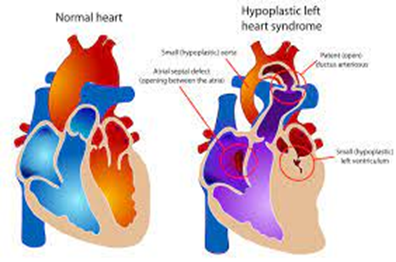A 5-year-old patient is brought into the Emergency Room and is diagnosed with an Acute Kidney injury (AKI). Which findings indicate this diagnosis?
Peripheral Edema
Blood pressure of 112/70
Potassium level of 4.7 (normal: 3.5-5.0 mmol/L)
Diarrhea
Oliguria
Correct Answer : A,E
The findings that indicate a diagnosis of Acute Kidney Injury (AKI) in a 5-year-old patient are:
A. Peripheral Edema: Peripheral edema, or swelling in the extremities, can be a sign of fluid retention due to impaired kidney function in AKI.
E. Oliguria: Oliguria, which is a decreased urine output, is a common sign of AKI. It can be defined as a urine output of less than 0.5 mL/kg/hour in children.
The other findings mentioned (B, C, and D) do not specifically indicate a diagnosis of AKI:
B. Blood pressure of 112/70: The blood pressure within this range is not necessarily indicative of AKI on its own.
C. Potassium level of 4.7 (normal: 3.5-5.0 mmol/L): While abnormal potassium levels can be associated with AKI, a potassium level of 4.7 mmol/L is within the normal range.
D. Diarrhea: Diarrhea is not typically a direct symptom of AKI but may be seen in various other conditions or as a result of electrolyte imbalances associated with kidney dysfunction.
Nursing Test Bank
Naxlex Comprehensive Predictor Exams
Related Questions
Correct Answer is A
Explanation
Hypoplastic Left Heart Syndrome is a complex congenital heart defect in which the left side of the heart (left ventricle and aorta) is underdeveloped, making it unable to pump oxygenated blood effectively to the body. The treatment of HLHS typically involves a series of surgical interventions because it cannot be cured with a single surgery. The ultimate goal of treatment is to provide palliative care, which means managing the condition to improve the child's quality of life while waiting for a heart transplant. The surgical procedures are typically performed in stages, with the first surgery usually performed shortly after birth, followed by additional surgeries as the child grows.
Option B is not accurate because HLHS cannot be cured with a single surgery, and creating an opening between the atria and ventricles (e.g., the Norwood procedure) is one step in the staged surgical treatment, but it doesn't completely "cure" the condition.
Option C is not accurate because HLHS is primarily characterized by an underdeveloped left ventricle and aorta, not the displacement of the pulmonary and aortic arteries.
Option D refers to the use of prostaglandin to maintain a patent ductus arteriosus (PDA) and improve blood flow to the lungs, which can be part of the initial management of HLHS but is not a definitive treatment. Prostaglandin is used to stabilize the infant before surgical interventions are performed.

Correct Answer is D
Explanation
Weight loss in a child with acute glomerulonephritis is often due to a reduction in edema (fluid retention and swelling). Acute glomerulonephritis can lead to significant edema, as the kidneys may not effectively filter excess fluid and waste products from the body. During hospitalization and treatment, interventions such as diuretics and improved kidney function may result in the gradual removal of excess fluid, leading to a decrease in edema and overall body weight.
The other options are less likely to be the primary cause of the weight loss:
A. Poor appetite: While acute glomerulonephritis can affect appetite, especially due to nausea or other symptoms, it is not typically the primary reason for significant weight loss over a short period.
B. Restriction to bed rest: While being on bed rest can lead to muscle atrophy and loss of lean body mass over an extended period, it is unlikely to result in an 8-pound weight loss in just 4 days unless there are additional factors at play.
C. Increased potassium intake: Increased potassium intake alone would not be a primary cause of significant weight loss. High potassium levels in the blood (hyperkalemia) can occur in kidney disease, but it is not typically associated with rapid weight loss.
Whether you are a student looking to ace your exams or a practicing nurse seeking to enhance your expertise , our nursing education contents will empower you with the confidence and competence to make a difference in the lives of patients and become a respected leader in the healthcare field.
Visit Naxlex, invest in your future and unlock endless possibilities with our unparalleled nursing education contents today
Report Wrong Answer on the Current Question
Do you disagree with the answer? If yes, what is your expected answer? Explain.
Kindly be descriptive with the issue you are facing.
